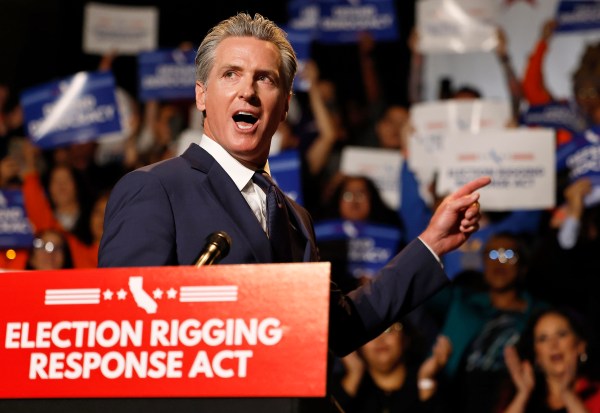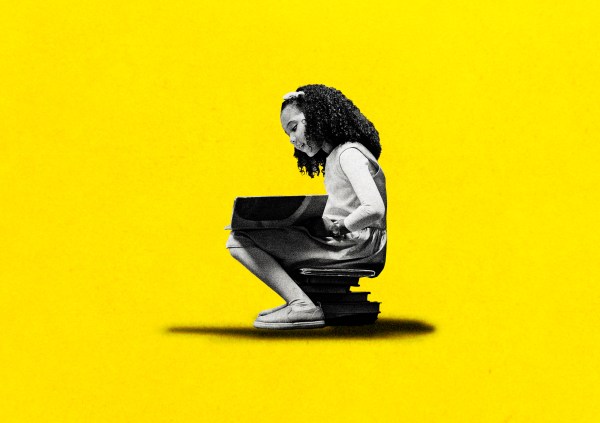Thursday’s hearing of the House Select Committee to Investigate the January 6th Attack on the United States Capitol covered mounds of information, but one sentence from Rep. Liz Cheney’s opening statement provided perhaps the most concise summary of the committee’s findings: “The attack on our Capitol was not a spontaneous riot.”
Committee Chairman Rep. Bennie Thompson and Cheney, the vice chair, guided viewers through several multimedia presentations and witness testimony during the two-hour, primetime hearing, revealing the extent to which many rioters prepared to “invade” and “occupy” the Capitol complex on January 6, 2021, in response to Donald Trump’s lies about the 2020 election results.
Cheney provided a broad overview of the committee’s findings and of the hearings to come. “Over multiple months,” she said, “Donald Trump oversaw and coordinated a sophisticated seven-part plan to overturn the presidential election and prevent the transfer of presidential power. In our hearings, you will see evidence of each element of this plan.”
Cheney’s remarks methodically outlined examples of members of Trump’s own administration and inner-circle refuting the stolen-election narrative, including video of testimony from former Attorney General William Barr and daughter Ivanka. Trump also pressured Vice President Mike Pence to stop certification of the election results. And, according to Cheney, when rioters outside the Capitol on January 6 chanted “Hang Mike Pence,” Trump’s response was, “Maybe our supporters have the right idea. Mike Pence deserves it.”
After Thompson and Cheney’s opening statements, the committee played a 10-minute video, which drew on footage from documentary filmmaker (and witness in the hearing) Nick Quested, along with bodycam and surveillance footage from Metropolitan Police and United States Capitol Police. The video, which former Trump chief of staff Mick Mulvaney called “stunning,” featured timestamps that provided a detailed timeline of three overlapping events of January 6: the rally at the Ellipse in front of the White House, the joint session of Congress to certify the electoral votes, and the storming of the Capitol.
The Proud Boys—a far-right group whose members describe themselves as part of a “pro-Western fraternal organization for men who refuse to apologize for creating the modern world”—and others who first breached the perimeter of the Capitol grounds at the Peace Circle were a relatively small and extreme group whose beliefs and actions don’t represent most of the American public. But egged on by Trump’s election conspiracies, they sparked the mob’s violence and terror at the Capitol.
By 10:30 a.m. on January 6, Quested was with a group of approximately 250-300 Proud Boys who were moving east along the National Mall toward the Capitol. The fact that they were walking away from the Ellipse, where Trump had not yet started speaking, came as a surprise to Quested since he thought the president’s address was the main event. The Proud Boys walked around the reflecting pool in front of the Capitol and were marching by the Peace Circle at 11:22. Trump’s speech began at the Ellipse at noon. At 12:53, a group of Proud Boys were back at the Peace Circle, where they breached the security perimeter, knocking officer Caroline Edwards unconscious. At 1 p.m., the gavel dropped to begin the joint session of Congress.
Edwards testified in the hearing Thursday that in the minutes before 12:53, she was at the Peace Circle behind a line of bike racks, with another line of bike racks further ahead, separating her and a few other police officers from the group of Proud Boys led by Joe Biggs. When another group of Proud Boys showed up wearing orange hats, Biggs—who was speaking into a megaphone—began to turn his rhetoric against the police. Soon the crowd had ripped through the outer line of bike racks and approached Edwards and her colleagues to breach the Capitol grounds. Edwards’ account was corroborated by video evidence and matches the account provided in the indictment of Biggs and other Proud Boys for seditious conspiracy released earlier this week.
Despite having been on duty and in uniform at “hundreds of civil disturbance events,” Edwards said nothing in her law enforcement training had prepared her for the “war scene” she witnessed on January 6, when officers shed blood, sweat, tears, and vomit over the course of hours of hand-to-hand combat as they tried to stop rioters from entering the Capitol.
Cheney also outlined the thrust of the upcoming hearings. The second hearing will demonstrate that Trump and his advisers knew that he had lost the election but nevertheless intentionally promoted falsehoods about election fraud, Cheney said: “This misinformation campaign provoked the violence on January 6.”
The third hearing will focus on Trump’s ultimately unsuccessful attempts to replace former acting Attorney General Jeffrey Rosen and other Justice Department officials after they refused to affirm his false election fraud allegations. In particular, Trump wanted to replace Rosen with another Justice Department lawyer, Jeff Clark, who drafted a letter purporting that the DOJ had “identified significant concerns that may have impacted the outcome of the election[s]” in six states.
The fourth hearing will explore “President Trump’s efforts to pressure Pence to refuse to count electoral votes on January 6.” Conservative former judge Michael Luttig, who was consulted by Pence’s staff in the days leading up to January 6, will testify at this hearing.
The fifth hearing will focus on Trump’s pressure on state officials and state legislatures, including plots to “rescind certified electoral slates” and send alternate “intentionally false electoral slates” in their place.
In the final two hearings, Cheney said Americans would “hear how President Trump summoned a violent mob and directed them, illegally, to march on the U.S. Capitol.”
On December 18, 2020, Trump met in the Oval Office with four conspiracy theorists—Sidney Powell, Michael Flynn, Patrick Byrne, and Emily Newman. On December 19, 2020, he tweeted: “Big protest in D.C. on January 6th. Be there, will be wild!”






Please note that we at The Dispatch hold ourselves, our work, and our commenters to a higher standard than other places on the internet. We welcome comments that foster genuine debate or discussion—including comments critical of us or our work—but responses that include ad hominem attacks on fellow Dispatch members or are intended to stoke fear and anger may be moderated.
With your membership, you only have the ability to comment on The Morning Dispatch articles. Consider upgrading to join the conversation everywhere.